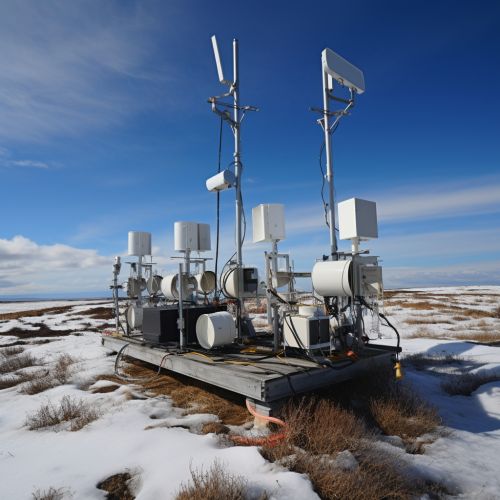Climate Change Monitoring
Introduction
Climate change monitoring refers to the systematic and long-term observation of the global environment, particularly the Earth's climate system, to detect changes over time. This scientific discipline is essential for understanding the dynamics of climate change, assessing its impacts, and informing mitigation and adaptation strategies.


Historical Background
The history of climate change monitoring can be traced back to the 19th century when scientists first began to understand the Earth's climate system. The development of meteorological instruments such as thermometers and barometers allowed for the systematic collection of weather data. By the late 19th century, weather stations were established around the world, providing the first global network for climate monitoring.
In the 20th century, the advent of satellite technology revolutionized climate monitoring. Satellites such as the Television Infrared Observation Satellite (TIROS-1) launched in 1960, provided unprecedented global coverage and accuracy. Today, a fleet of satellites from various countries continuously monitor the Earth's atmosphere, oceans, and land surface, providing critical data for climate change research.
Climate Variables
Climate change monitoring involves the measurement of various climate variables. These include temperature, precipitation, wind speed and direction, atmospheric pressure, and humidity. Other important variables include solar radiation, sea surface temperature, sea level, ice cover, and greenhouse gas concentrations. Each of these variables provides a piece of the puzzle in understanding the complex and interrelated processes of the Earth's climate system.
Monitoring Techniques
Climate change monitoring employs a range of techniques, from ground-based observations to remote sensing from satellites. Ground-based monitoring involves the use of weather stations, buoys, and research vessels to collect data on various climate variables. These data are then compiled into databases and used to track changes over time.
Remote sensing from satellites provides a global perspective on climate change. Satellites such as those in the Geostationary Operational Environmental Satellite (GOES) series and the Polar Orbiting Environmental Satellites (POES) provide continuous, real-time data on the Earth's atmosphere, oceans, and land surface.
Climate models are another important tool in climate change monitoring. These mathematical models simulate the interactions of the atmosphere, oceans, land surface, and ice. They are used to understand past climate changes, predict future changes, and test hypotheses about the causes and effects of climate change.
Importance of Climate Change Monitoring
Climate change monitoring is critical for understanding the rate and magnitude of climate change, assessing its impacts, and informing mitigation and adaptation strategies. It provides the scientific basis for policy decisions on climate change and helps to evaluate the effectiveness of these policies.
Monitoring also provides early warning of potential climate-related hazards, such as heatwaves, droughts, floods, and sea-level rise. This information can be used to develop strategies to reduce the risk of these hazards and to prepare for their impacts.
Challenges and Future Directions
Despite the advances in climate change monitoring, there are still many challenges. These include the need for more comprehensive and accurate data, particularly in developing countries and remote regions; the need for improved models to predict future climate change; and the need for better integration of climate data into decision-making processes.
Looking to the future, advances in technology, such as the development of new satellites and sensors, will continue to improve the accuracy and coverage of climate change monitoring. There is also a growing emphasis on the integration of climate data with other types of environmental data, such as biodiversity and land use data, to provide a more holistic understanding of the impacts of climate change.
